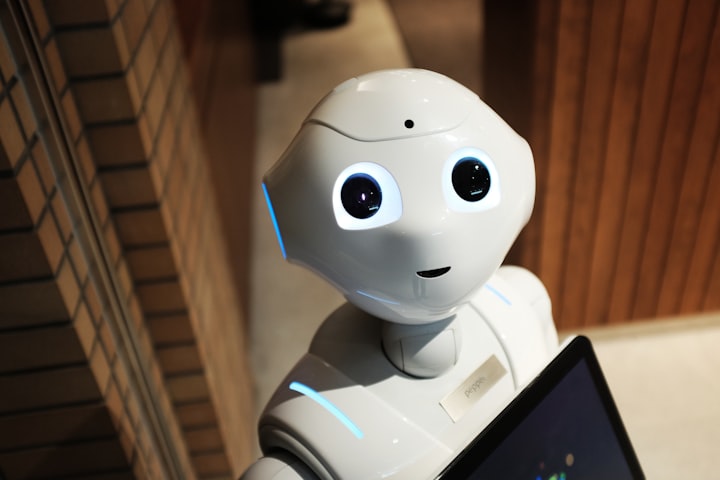
Robots are machines designed to carry out tasks automatically or with minimal human intervention. They are typically programmed to perform specific actions and can range from simple machines that perform repetitive tasks to advanced robots capable of complex actions and decision-making.
Robots can be classified into different categories based on their functionality and design. Here are a few common types of robots:
Industrial Robots: These robots are used in manufacturing and industrial settings to automate tasks such as assembly, welding, packaging, and material handling. They are often large, with articulated arms and precise movements.
Service Robots: Service robots are designed to assist humans in various settings, such as healthcare, hospitality, and customer service. They can perform tasks like cleaning, companionship, delivery, and information retrieval.
Medical Robots: These robots are used in healthcare settings to assist with medical procedures, surgery, diagnostics, and rehabilitation. They can provide greater precision and accuracy than human hands, leading to improved outcomes.
Autonomous Robots: Autonomous robots are capable of operating independently, using sensors and artificial intelligence algorithms to navigate their environment and make decisions. They are used in applications like autonomous vehicles, drones, and exploration robots.
Humanoid Robots: Humanoid robots are designed to resemble humans in appearance and behavior. They can interact with humans, recognize speech and gestures, and perform tasks requiring human-like dexterity. Humanoid robots are often used in research, entertainment, and social assistance.
Educational Robots: These robots are used in educational settings to teach programming, robotics, and problem-solving skills. They are typically designed to be user-friendly and engaging for students of different age groups.
Robots have a wide range of applications and are becoming increasingly prevalent in many industries. They can increase efficiency, improve safety, and take on tasks that are repetitive, dangerous, or require high precision. However, ethical considerations, such as job displacement and privacy concerns, are also associated with the rise of robots in various sectors.
Development of robots
The development of robots has been a continuous and dynamic process that has evolved over several decades. Here's an overview of the major milestones and advancements in the development of robots:
Early Development: The concept of robots dates back to ancient times, with early examples found in ancient Greek, Egyptian, and Chinese mythology. However, it wasn't until the 20th century that significant progress in robotics began.
Industrial Robotics: In the 1960s, the first industrial robots were introduced for use in manufacturing industries. These robots were primarily used for tasks such as welding, painting, and assembly. They were large and expensive, designed to work in structured environments with limited interaction with humans.
Mobile Robotics: In the 1970s and 1980s, research in mobile robotics led to the development of robots capable of autonomous movement. Early examples include robots like Shakey, which could navigate obstacles and perform simple tasks.
Advances in AI and Sensors: The advancement of artificial intelligence (AI) and sensor technologies in the 1980s and 1990s enabled robots to perceive and interact with their environment more effectively. This led to improvements in robot perception, decision-making, and autonomous navigation.
Collaborative Robots: Collaborative robots, or cobots, emerged in the 2000s. Unlike traditional industrial robots, cobots are designed to work alongside humans in a cooperative manner. They are equipped with advanced sensors and safety features, enabling safer human-robot collaboration.
Humanoid Robots: Humanoid robots, which resemble humans in appearance and behavior, have seen significant development. Examples include ASIMO, developed by Honda, and Pepper, developed by SoftBank Robotics. Humanoid robots have advanced capabilities in movement, speech recognition, and interaction with humans.
Soft Robotics: Soft robotics is an emerging field that focuses on developing robots with flexible and deformable structures, often inspired by biological systems. Soft robots have the potential for safe interaction with humans and adaptability to complex environments.
AI and Machine Learning: Recent advancements in AI and machine learning have significantly enhanced the capabilities of robots. Machine learning algorithms enable robots to learn from data and improve their performance over time. This has led to advancements in areas like autonomous driving, object recognition, and natural language processing.
Swarm Robotics: Swarm robotics involves the coordination of multiple robots working together to achieve a common goal. Inspired by collective behavior observed in nature, swarm robots can accomplish tasks efficiently and robustly, even with simple individual capabilities.
Social and Emotional Robots: Research is underway to develop robots that can understand and express emotions, as well as interact socially with humans. These robots aim to enhance human-robot interaction and find applications in areas such as therapy, education, and companionship.
The development of robots continues to advance rapidly, with ongoing research and technological breakthroughs driving innovation in various fields. As technology progresses, we can expect to see more sophisticated and capable robots in the future, with increased autonomy, adaptability, and integration into everyday life.





Comments
There are no comments for this story
Be the first to respond and start the conversation.